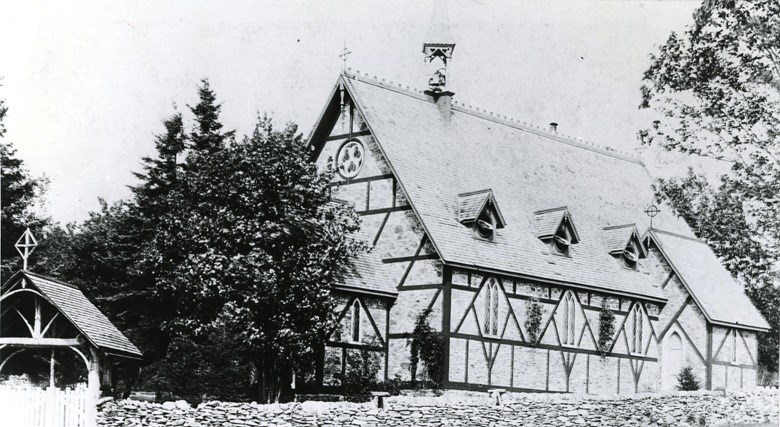From the archives of the Sault Ste. Marie Public Library:
*************************
Remember This: Bishop Fauquier Memorial Chapel
On the grounds of Algoma University, you will find the Bishop Fauquier Memorial Chapel.
Frederick Dawson Fauquier was consecrated in Toronto in September 1873 to become the first Anglican Bishop in Algoma.
Immediately upon his appointment, Bishop Fauquier left for England in order to drum up support for his fledgling diocese.
When Fauquier finally arrived in Sault Ste. Marie in the summer of 1874 he began using the funds that he had procured from his patrons in England to further the growth of the Anglican Church in this area, including the building of Bishophurst.
This would become the home for all future local Anglican bishops.
Two of Fauquier’s most important projects were the Indian schools which were built in the 1870s, Wawanosh for the girls and Shingwauk School for the boys.
After these schools opened Fauquier’s primary interest was to ensure that a chapel be built on the Shingwauk School property.
By 1881 he had chosen the site and architectural plans for the construction of the chapel.
On July 1, 1881 Bishop Fauquier outlined the perimeter of where the external walls were to be built.
The male students then placed stones along the perimeter as a pledge of their assistance in the construction of the chapel.
The students also contributed in other ways.
Three-quarters of the student population went without their ration of syrup during Lent, so that they could contribute 10 cents a week to the chapel fund.
Bishop Fauquier would never live to see the chapel completed.
He and his wife died in 1881 and were buried on the Shingwauk grounds the following spring.
After Fauquier’s death the project was at a standstill with some of the chapel having already been completed, including the pulpit, seats and windows but they still lacked the $1,500 needed to begin construction of the actual building.
The chapel was finally constructed under the supervision by Rev. E.F. Wilson who was also the architect and designer of the chapel and it was consecrated by Bishop Sullivan on August 29, 1883.
The Bishop Fauquier Chapel was built in a combination of Gothic and Tudor styles which makes it unique not just in Ontario but also in Canada.
It is built of red sandstone, which was excavated from the neighbouring field.
The walls are divided into squares and triangles by wooden beams which were built directly into the wall.
A small bell tower sits on the roof of the chapel to house the bell which was purchased at the time of construction for approximately $40.
The front entrance is a gothic archway that frames a large oak doorway with heavy iron hinges.
The chapel’s interior consists of three sections; the pews for the congregation, then a single step leading to the choir stall and then another two steps that lead into the sanctuary.
The oak pews and other furniture are hand carved with gothic decorations.
It also contains a large organ made by the Estey Organ Company.
An important feature of the church is a large Bible that sits at the pulpit, bound in decorated calfskin with “The Bishop Fauquier Memorial Chapel” inscribed on it. The Bible is dated 1883 and was presented by the “Society for the Propagation of the Gospel” and was given to the chapel upon its opening in 1883.
The Bishop Fauquier Memorial Chapel is the only remaining building from the original Shingwauk School.
Although the Bishop Fauquier Memorial Chapel may not be the oldest church in Sault Ste. Marie it is the most well-preserved since it has remained unchanged in the 133 years since its construction and is an example of one of the most unique church architectural styles in Sault Ste. Marie.
*************************
Each week, the Sault Ste. Marie Public Library and its Archives provides SooToday readers with a glimpse of the city’s past.
Find out more of what the Public Library has to offer at www.ssmpl.ca and look for more Remember This? columns here
